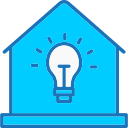
The Role of IoT in Future Smart Homes
The Internet of Things (IoT) is set to revolutionize the concept of smart homes, creating interconnected spaces that are intuitive, adaptive, and responsive to the desires and routines of residents. By embedding intelligence and connectivity in everyday objects, IoT is transforming homes from passive environments into active partners in daily life. As technology advances, the integration of IoT will deepen, offering unprecedented convenience, safety, and efficiency. This evolution is shaping not only how we live but also how we interact with the spaces around us, promising a future where our homes anticipate our needs and empower us to lead more streamlined, enjoyable lives.
Intelligent Sensing and Response
Smart sensors are at the heart of a fully automated home, detecting motion, temperature, lighting, and even air quality. By constantly monitoring these factors, the IoT infrastructure can dynamically adjust settings like lighting, climate control, and security systems without any manual intervention. Over time, machine learning algorithms analyze behavioral patterns, enabling the home to anticipate needs, such as preheating the oven before you arrive or locking doors automatically at night. This sophisticated response system reduces the cognitive load on residents and fosters an effortless, customized experience.
Adaptive Living Spaces
Personalization is a pivotal promise of IoT in future smart homes. Devices and systems will not only remember preferences for lighting, sound, or temperature but also learn and adapt to changes in taste or lifestyle. For instance, the system could dim the lights and play soothing music when it detects that someone is feeling stressed, based on biometric sensors. This adaptability enables homes to actively enhance comfort and well-being, transforming static environments into lively, supportive spaces that evolve alongside their inhabitants.
Routine Management and Optimization
Daily tasks and routines are made more manageable through IoT-driven automation. Smart appliances can work in concert to schedule laundry, manage energy loads, or prepare coffee before you wake up. Over time, systems optimize these tasks for energy use, efficiency, and personal convenience by analyzing patterns and predicting needs. The home becomes a true partner, handling repetitive chores with minimal instruction while freeing up time for residents to focus on more meaningful aspects of life.
Enhanced Security and Safety
Proactive Threat Detection
IoT-enabled sensors and surveillance systems work continuously to detect unusual activity inside and outside the home. Whether it’s recognizing unexpected movement when nobody is home or sensing potential fire hazards from overheating devices, these systems can instantly alert homeowners and, if necessary, local authorities. By minimizing delays and automating protective responses, proactive detection reduces risks and ensures that safety measures are always a step ahead of potential dangers.
Integrated Emergency Response
Integration is a hallmark of IoT-based safety. Smoke detectors, fire suppression systems, emergency lighting, and door controls can communicate seamlessly, executing coordinated actions in response to incidents. For example, in the event of a gas leak, the system could automatically shut off valves, open windows, and notify emergency services—all within seconds. This coordinated response minimizes harm and organizes help more efficiently, making smart homes not just safer, but truly resilient in the face of emergencies.
Personalized Access Control
Future smart homes will use IoT to provide granular, personalized access management. Facial recognition, biometric scans, and digital keys allow for secure entry tailored to individuals, while temporary access can be granted remotely for guests or service personnel. The system can also track who enters and leaves the home, using this information to detect anomalies and tailor access privileges. As a result, security becomes more transparent, with homeowners enjoying peace of mind and greater control over who enters their most private spaces.
Dynamic Energy Management
With IoT, smart homes can monitor and manage energy consumption at granular levels. Appliances, lighting systems, and heating or cooling units communicate usage data in real time, allowing systems to identify inefficiencies and make immediate corrections. For instance, the home can shift power-hungry tasks to off-peak hours or deactivate unused devices automatically. Dynamic energy management not only reduces utility bills for homeowners but also lessens strain on the power grid and supports the integration of renewable energy sources.
Smart Resource Allocation
Efficient use of water, gas, and other resources is made possible through IoT-enabled monitoring and control. Leak detection systems, automated irrigation controllers, and adaptive water heaters adjust their operation based on actual needs and environmental conditions. By analyzing usage patterns, smart homes can suggest changes or implement conservation measures without human intervention. Over time, this intelligent allocation not only saves money but also contributes to the overall reduction in resource consumption, helping to build a more sustainable future.
